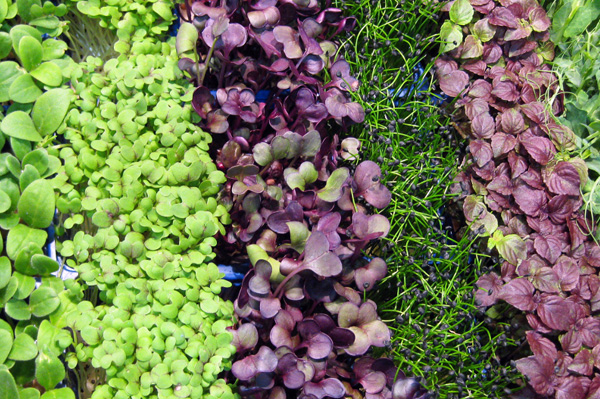As I surveyed my property recently I noticed that things are "greening up." It's that time of the year when growing plants begin to regain their color after a long, cold winter of dormancy. That beautiful green color is also appearing on our plates, too.
Greens are grown and sold in upscale markets for use in garnishing salads, soups, on plates and in sandwiches. First appearing on chefs' menus as far back as the 80s in haute cuisine places like San Francisco, edible young greens and grains are produced from various kinds of vegetables, herbs and similar plants. Smaller than baby greens and harvested later than sprouts, microgreens are used both as a visual and flavor component to enhance the beauty, taste, and freshness of food, adding a delicate texture and distinctive flavor. They range in size from 1" to 3" including the stem and leaves. A microgreen has a single central stem that is cut just above the soil line at harvest, a mere 10-14 days from planting.

Growing microgreens is relatively easy and can be done by backyard farmers using only a small plastic container. While the labor invested is low, the benefits are high. A nutritional study conducted by the Department of Nutrition and Food Science at the University of Maryland found that microgreens have 5 times the nutritional value than their mature vegetable counterparts. They contain concentrations of Vitamin C, K, E, and carotenoids containing healthful ascorbic acid, beta-carotine, and tocopherois. And among 25 different microgreens studied red cabbage, cilantro, garnet amaranth and green daikon radish were found to be the most healthful.

Tomorrow: Growing your own Microgreens
No comments:
Post a Comment